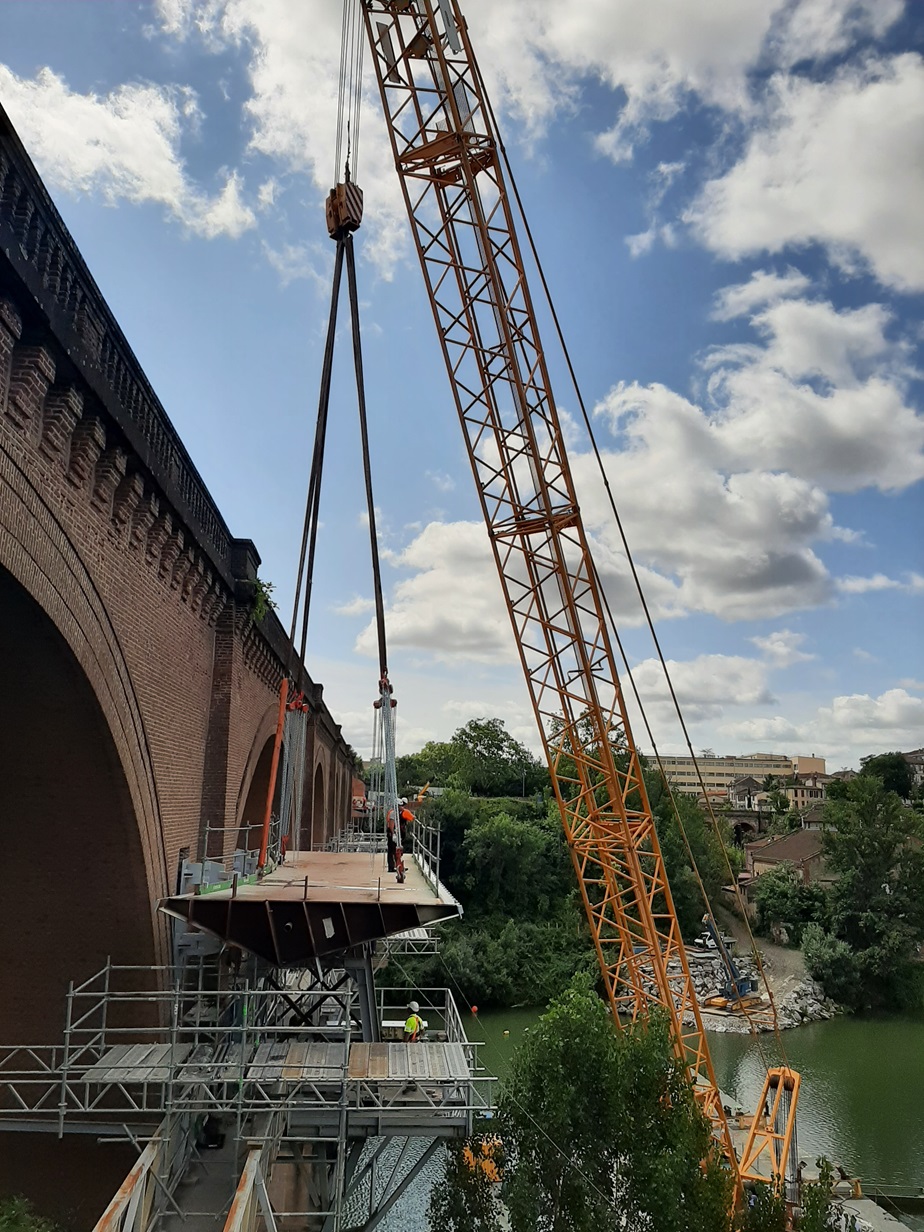
Every bridge installation Sarens performs is unique, and with decades of expertise in this sector, we know that there will always be fresh challenges to solve. No matter the constraints, our job is to find the solution.
So when client MAEG Costruzioni SpA contacted us about installing a steel cyclist and pedestrian walkway in Albi, France, Sarens took on the challenge. Our mission: install nine large bridge sections along the historic 19th-century railway viaduct on the Tarn river.
To do it, the team had to work with two constraints:
Fortunately, Sarens is world-renowned for applying our engineering expertise and creativity to problems like these, and we soon conceived of the solution: the crew would transport the CC1500 lifting crane along the Tarn using specialised, narrow transport barges before handing off bridge components to a Sarens modular barge for installation.
The project, which was successfully completed in October of 2024, made us of the following equipment:
Because of the narrow waterway to be traversed, the CC1500 crane had to be transported piece by piece from the Netherlands via narrow transport barges, travelling through a tight lock along the way.
Furthermore, due to the narrow width of these barges, the crew had to pay special attention to their stability. For example, if the crane body were to be placed on the centre of a barge at just a 10cm offset, it would shift the barge’s angle by 1°–and would become stuck in the lock!
These careful stability calculations were one reason why the CC1500 was chosen for the job: it had to be sufficiently strong to lift each bridge section but light enough to avoid over-submerging the barge, which would have resulted in a collision with the river bed.
In total, Sarens used 11 trucks (in addition to the barges) to transport the CC1500, as well as 37 trucks for the main Sarens modular barge, and 8 trucks for the rented narrow barges. It took the rigging team five days to assemble the main barge and a further five days to assemble the crane with a 54-metre main boom. Once on location, the transport barge was reconfigured so it would be wide enough for installation work, allowing the crane to be driven onto the main Sarens barge.
With all the equipment in place and ready to work, the CC1500 proceeded to lift and install all nine bridge sections to a 30-metre height. It slewed and crawled all along the barge to install each load, which weighed up to 50 tonnes and measured 32 metres in radius.
Thanks to Sarens’ five-member crew and their smooth collaboration with our client, the cyclists and pedestrians of Albi now have a direct and safe link between both banks of the Tarn. This is an important part of the city’s urban renewal plan, which aims to conserve historical architecture while successfully developing the surrounding neighbourhood.